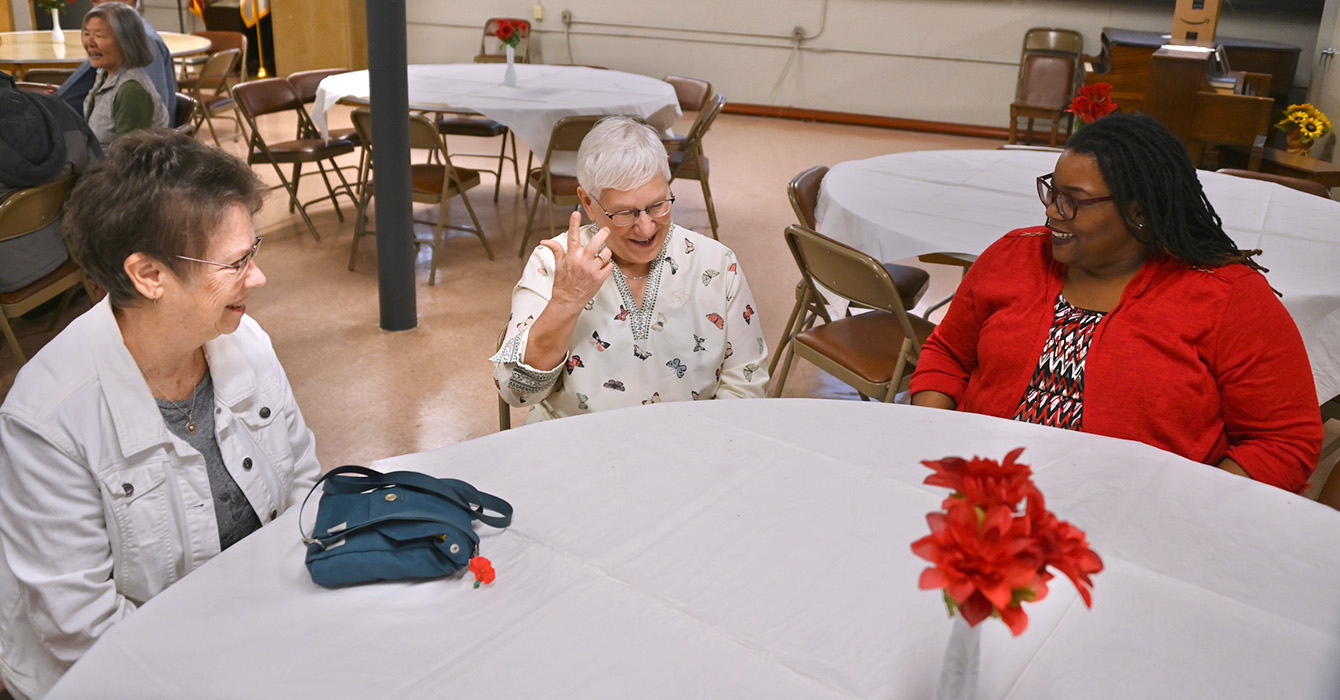One day when our son Silas was 6, I saw him sitting at the end of the front pew in the sanctuary. He was alone and crying, and I couldn’t do anything to help.
But he helped me glimpse the heart of the pastoral vocation.
I couldn’t do anything because I was giving the pre-worship welcome -- “Welcome to worship … If you’re here for the first time, please sign the attendance pad …” My wife and co-pastor, Ginger, usually gives this greeting, but this morning it was my task.
Between glances at my script, I noticed Silas out of the corner of my eye, a frown erasing his dimple, tears coursing down his cheeks, shoulders slumped.
I’d seen this a million times before -- after a skinned knee or a scuffle with his brother or a reprimand from me. Any other time I would have sped to his side, but this time I had my script to finish. So I quickened the pace. I skipped lines. I cut to the end: “Prepare your hearts and minds for worship.”
And then I committed dereliction of duty. Instead of walking to the back of the sanctuary during the first notes of the prelude and falling in line, ready to process behind the candle, cross and choir, I walked to Silas, sat down, put my arm around him and asked what was wrong.
He’d been given the job of handing out fliers for a children’s event, a job he didn’t like. And he couldn’t find his mother or older brother anywhere (I scanned the sanctuary, and neither could I). He felt abandoned.
As I listened, I started strategizing: What am I going to do? The congregation was already on the last verse of the opening hymn. The reading of Scripture and the sermon -- my sermon -- would come after the opening prayer. And there was still no sign of Ginger or Silas’ brother.
Then I heard a voice. It wasn’t a voice from outside me, a voice from above like the one at Jesus’ baptism. It was the voice of vocation, a voice from within. And that voice said, “Your place is here, right here.”
Then I knew, even if the lector sat down after the Scripture reading and it was my turn to stand up, I wasn’t going anywhere as long as these tears were still flowing and my son felt alone.
I leaned down to Silas and said, “I’m right here. I’m not going anywhere.”
Since that Sunday, I have replayed this scene in my mind; it has become for me a kind of parable that gives me clarity about the pastoral vocation that I have rarely had.
If the voice of vocation tells me as a father to stay near this child, the same voice tells me as a leader that the heart of the pastoral vocation is to stay near the congregation, especially in its times of abandonment, loneliness and fear.
Of course, a congregation is not a helpless child, so in that way the analogy breaks down. But both need a soul friend to companion them through times of turmoil and change.
If the writers of leadership books are right, we live in a period of rapid change in the shape of pastoral leadership. Pastors are bombarded with various images of the pastoral vocation -- pastor as visionary leader, CEO, spiritual guide, head strategist, entrepreneur, rabble-rouser-in-chief.
I have tried to live into so many of these that I’ve sometimes felt that at any given time I don’t know what I’m really about.
Except when an incident on a Sunday morning disclosed it to me: You are the one who leans over to this gathered body and says, “Pledges might be down, worship attendance might be declining, a new, hip church might be starting a block away, but even when the dimple of your smile disappears, I will stay near.”
You are a companion. You are the presence that symbolizes and embodies God’s own staying-near named Holy Spirit, the one who won’t fail to stay even when we do.
The temptation, of course, is to try to fix the problem. To wipe the tears and bring back the smile. That was my temptation with Silas. Glancing around the sanctuary, I was formulating a plan to fix the situation so I could get back to doing my job. Until that deeper voice spoke and told me my job was right here.
Many of the dominant images of leadership suggest that our job is to make things better. When a church is going through a dark night, we’re told to craft a plan to get it out. And sometimes that’s what needs to happen.
But at the heart of each image of leadership, I believe, is this call to stay near. Without it, the rest is mere technique, and can appear hollow.
Staying near doesn’t mean not doing anything else. But it shapes the “anything else” and gives it integrity.
His mom and brother did show up (they’d been in the restroom). And they showed up in time for me to preach the word of Christ, who in coming near to us in the flesh, and staying near to us in the Spirit, reminds me of the heart of this vocation.









